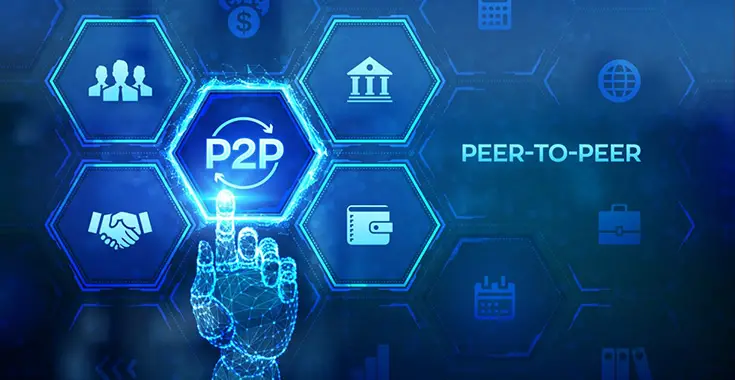Peer-to-peer (P2P) networks have changed how we share information but pose significant security risks. With the increasing number of cyberattacks and data breaches, knowing the latest security trends and predictions for P2P data is essential.
As peer-to-peer networks continue to grow in popularity, it becomes more and more important to share data safely. How is the data secured in peer-to-peer tools? This post will try to give you an answer to this important question.
The rise of Decentralized Networks
One trend in the future of P2P data security is the rise of decentralized networks. These networks spread data across many nodes, making it harder for hackers to get to or change the data. Decentralized networks also offer greater privacy and control for users.
One example of a decentralized network is hiveDrive, a P2P cloud storage solution that encrypts and shares shards of data with other nodes, offering a desirable option compared to conventional centralized networks. As similar platforms emerge and gain popularity, we can anticipate a broader adoption of decentralized networks for improved P2P data security.
Encryption and Blockchain technology
Another trend in the future of P2P data security is the increased use of encryption and blockchain technology. Encryption turns data into a code to stop unauthorized access.
P2P networks are using encryption more and more. Bitcoin and other coins' blockchain technology also find use in protecting peer-to-peer (P2P) networks. Blockchain technology creates a ledger of transactions that can't be changed and isn't centralized. This makes it perfect for safe P2P data sharing.
As these technologies keep improving, we can expect to see P2P networks that are even safer and less centralized. This could significantly affect our digital economy by giving us a safe place to share information and do business. With the rise of peer-to-peer (P2P) networks based on blockchain, we can look forward to a new era of safe, decentralized digital transactions.
User Privacy and Control
With the increasing concerns over data privacy and security, there is a growing trend toward giving users more control over their data in P2P networks. This includes encryption from end to end, anonymous browsing, and the ability to delete shared data or take away access to it.
As more people learn about the risks of sharing their data online, we expect P2P data security to emphasize privacy and control in the future, as well as secure and sustainable storage. This is because users want to ensure that their data is not being used for malicious purposes and that they can easily revoke access to any shared data.
Additionally, users want to be sure that their data is not being tracked or sold to third parties without their knowledge or consent. With the increasing emphasis on data privacy, we expect to see an increase in the development of features that give users more control over their data in P2P networks.
In addition, users also want to be certain that their data is secure from potential breaches or unauthorized access. Because of this, more and more P2P networks are being made with strong security protocols and privacy protections so that users can be sure their data is safe.
P2P Networks and Cybersecurity
As the importance of P2P data security continues to grow, we expect to see more collaboration between P2P networks and cybersecurity companies. As a result of this collaboration, new security protocols and technologies will likely be made to protect P2P networks from cyber threats.
Also, P2P networks and cybersecurity companies that offer data protection services like encryption and secure data storage may work together more. In the end, these partnerships will help ensure that P2P networks will continue to be a safe way to share data.
This could also lead to new technologies that can find and stop malicious traffic on P2P networks and find potential threats and warn users about them. Such tools would give users extra protection and help mitigate the risks associated with using P2P networks.
Business-to-Customer: Peer-to-Peer Network
This technology would allow users to securely and anonymously share files without needing a third-party intermediary. It could also protect users from evil people, like hackers, who want to get their hands on private information. Also, it could give users peace of mind by letting them know that their data is safe from possible security threats. This technology could potentially revolutionize the way people interact with each other online, as well as make the internet a much safer place.
Embracing the future of P2P data security
As P2P networks continue to change and grow, it is important to stay up to date on the latest data security trends and predictions. P2P networks can be safer and more reliable if they use decentralized networks, encryption, blockchain technology, and pay more attention to user privacy and control. Also, by working with cybersecurity companies, we can expect advanced security protocols and technologies to be made to protect users from cyber threats.
In the end, the future of P2P data security is full of exciting developments that could change the way we share information and talk to each other online.



